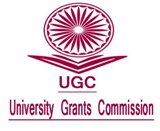Food Consumption Pattern among School Going Children in a Rural Area of Kerala
DOI:
https://doi.org/10.26725/JEE.2018.4.30.6157-6164Keywords:
School children, Socioeconomic status, Food consumption, Food frequency, KeralaAbstract
A study was conducted to assess the socioeconomic details and food consumption pattern of school children in a rural community. A total of 100 children in the age group of 10-12 years in Ernakulam district of Kerala was selected using simple random sampling. Interview method with the help of structured and pretested schedule was used to collect the data. The frequency of consumption of different foods was assessed using a food frequency questionnaire. The findings revealed high consumption of rice, milk & milk products, sugar & jaggery, fats & edible oils, medium consumption of vegetables & non vegetarian items, and low consumption of pulses, nuts, oil seeds & fruits. This indicates the poor socioeconomic status prevailing in the area under study.References
Bose, A. (2011). Census of India 2011: some highlights. Yojana, 55, 5-9.
Gharib, N., & Rasheed, P. (2011). Energy and macronutrient intake and dietary pattern among school children in Bahrain: a crosssectional study. Nutrition Journal, 10, 1–12.
Latheef, N. (2011). Food and nutrition security of paddy cultivators of Kaliyoor panchayat Unpublished MSc (Home Science) thesis, Kerala Agricultural University, Thrissur, 81p.
Mukherjee, R., & Chaturvedi, S. (2017). A study of the dietary habits of school children in Pune city, Maharashtra, India. International Journal of Community Medicine and Public Health, 4(2), 593-597.
Ramaraju, A. (2015). Health insurance scheme for low income groups in India with a focus on urban poor in Cochin. International Journal of Marketing and Human Resource Management, 6(1), 55-70.
Downloads
Published
How to Cite
Issue
Section
License
Authors who publish with JEE agree to the following terms:
- Authors retain copyright and grant JEE right of first publication with the work simultaneously licensed under a Creative Commons Attribution License that allows others to share the work with an acknowledgement of the work's authorship and initial publication in this journal.
- Authors are able to enter into separate, additional contractual arrangements for the non-exclusive distribution of the journal's published version of the work (e.g., post it to an institutional repository or publish it in a book), with an acknowledgement of its initial publication in this journal.
- Authors are permitted and encouraged to post their work online (e.g., in institutional repositories or on their website) prior to and during the submission process, as it can lead to productive exchanges, as well as earlier and greater citation of published work (See The Effect of Open Access).
Extension Education Society
https://creativecommons.org/licenses/by-nc-sa/4.0/
This work is licensed under a Creative Commons Attribution-NonCommercial-ShareAlike 4.0 International License.













.png)

